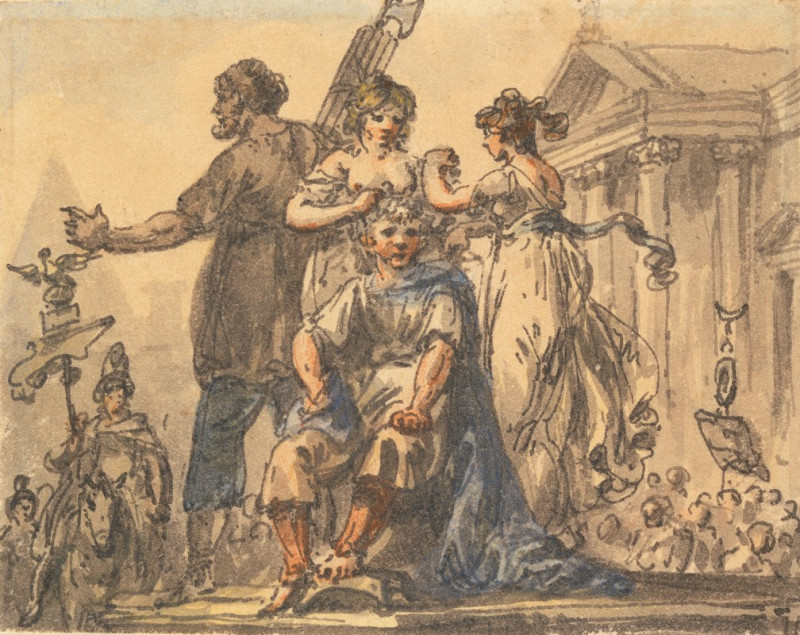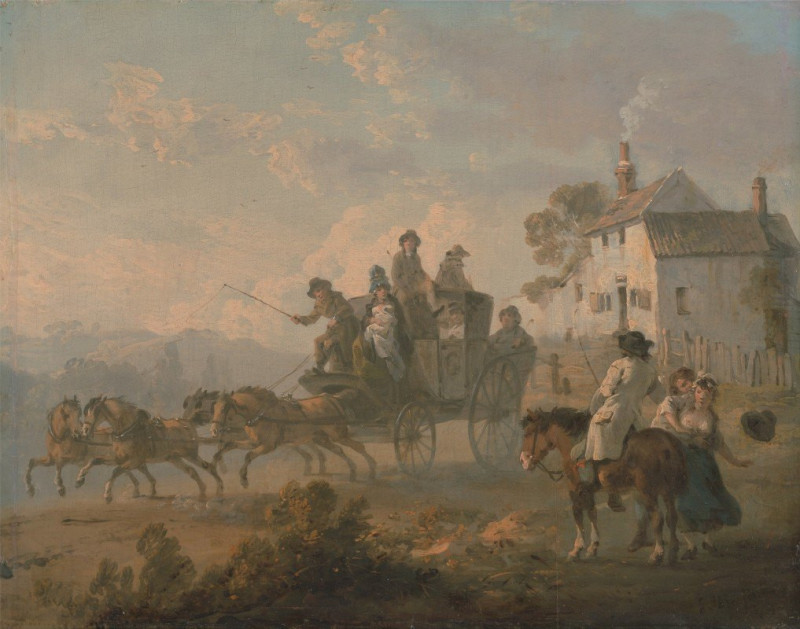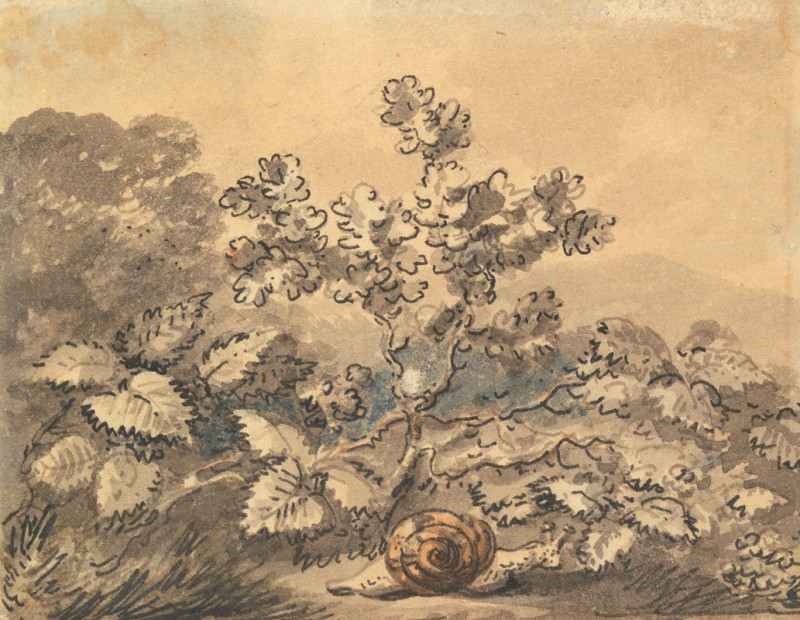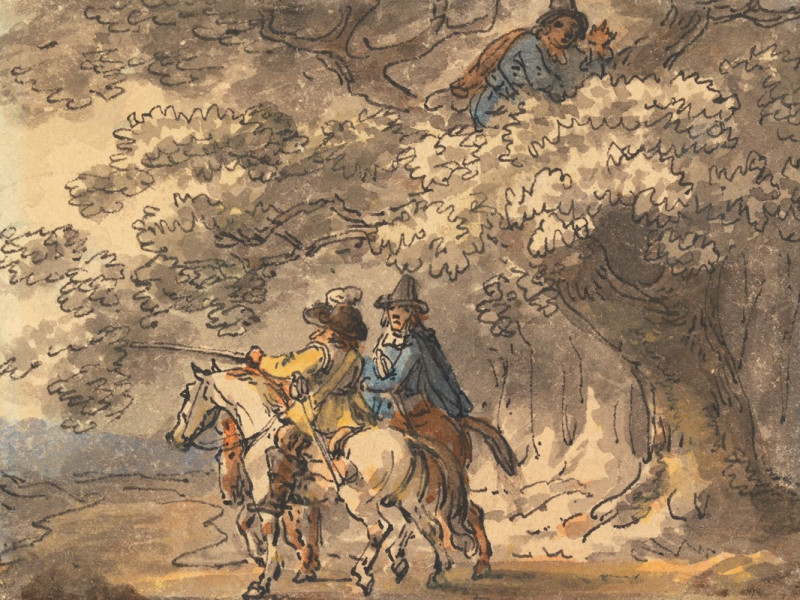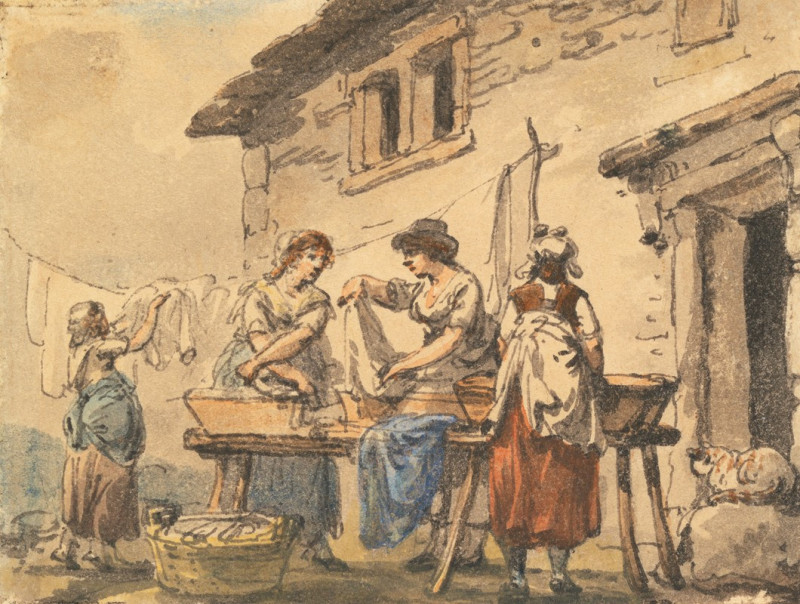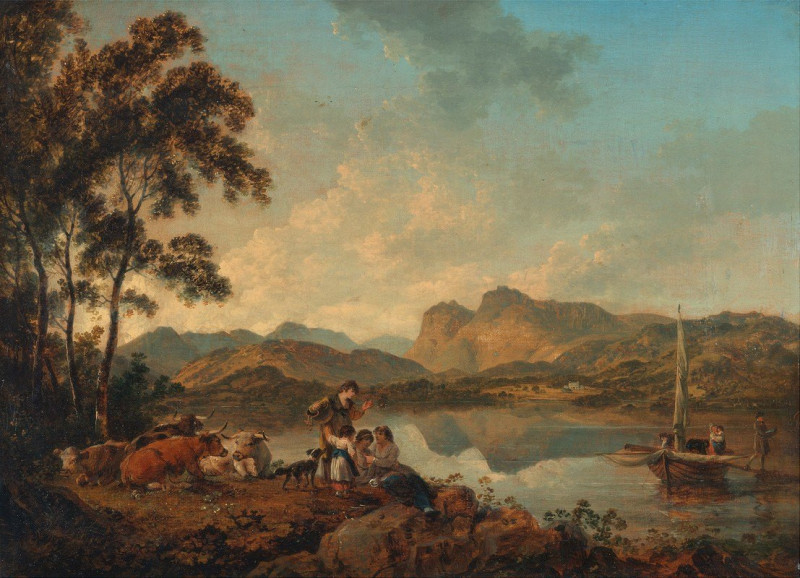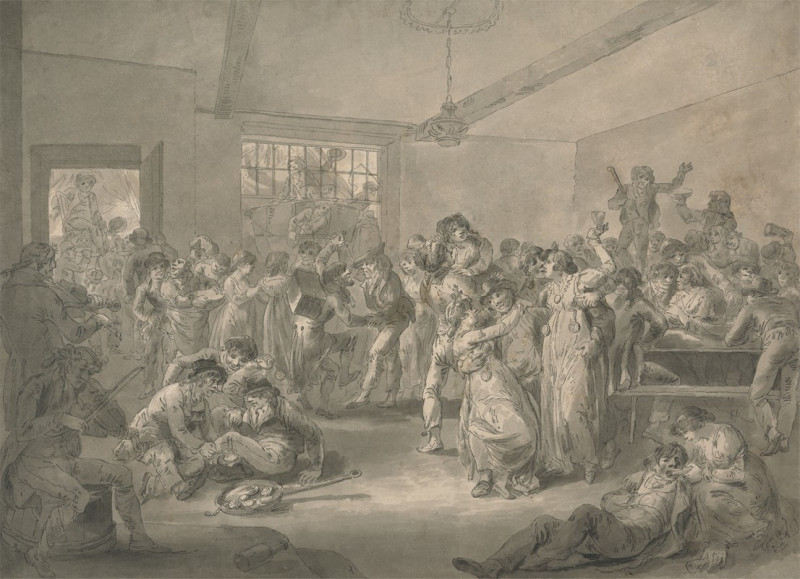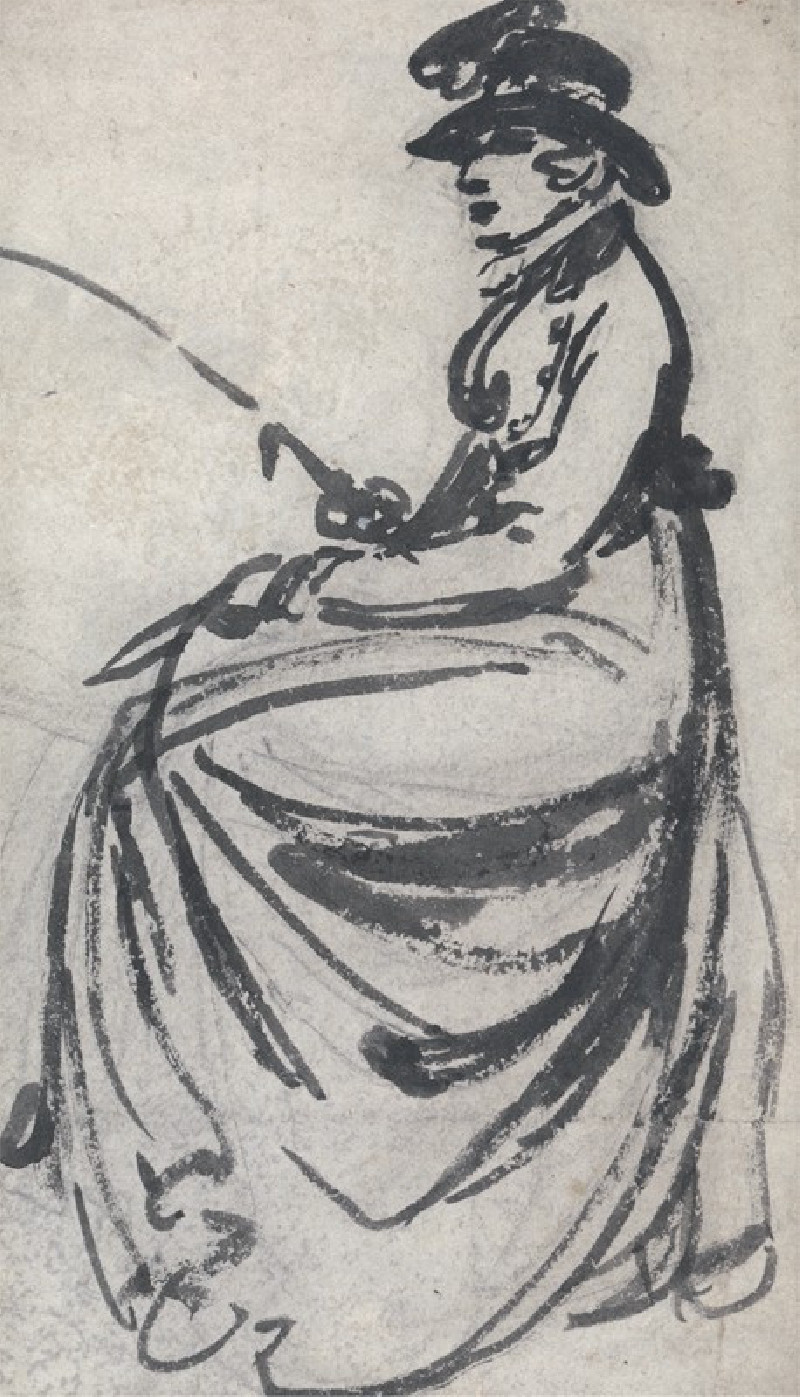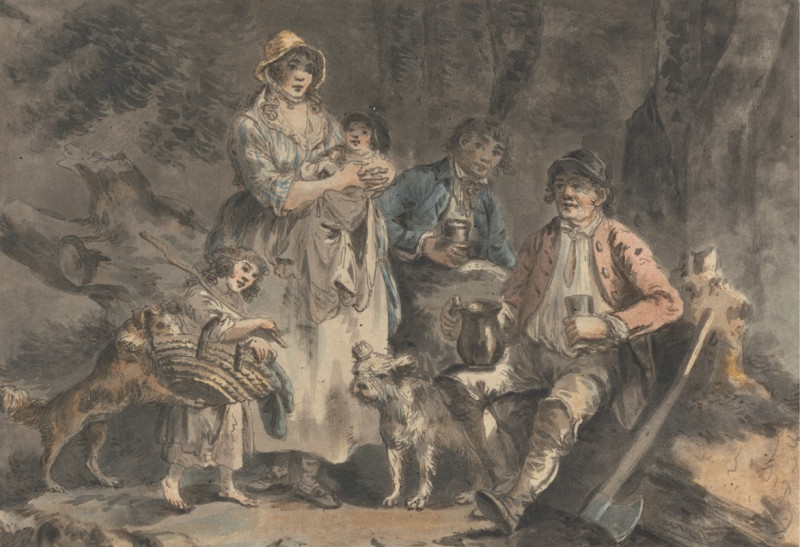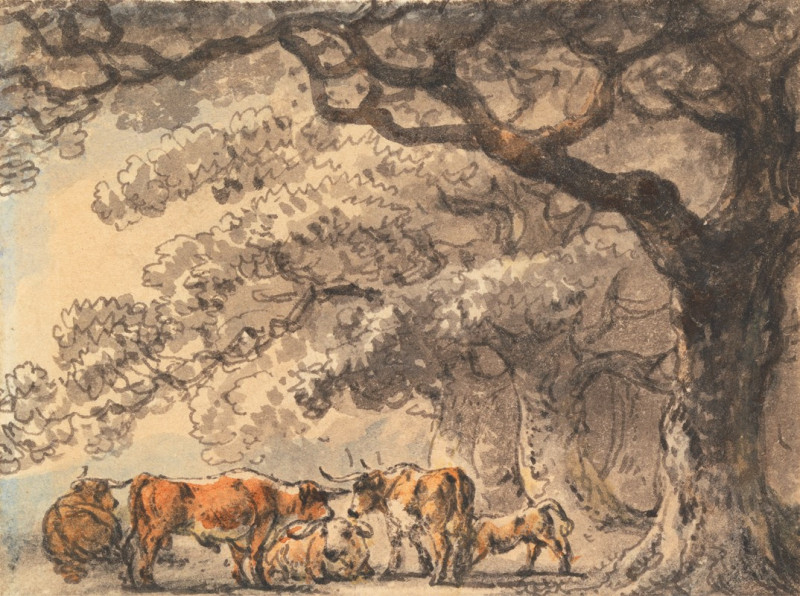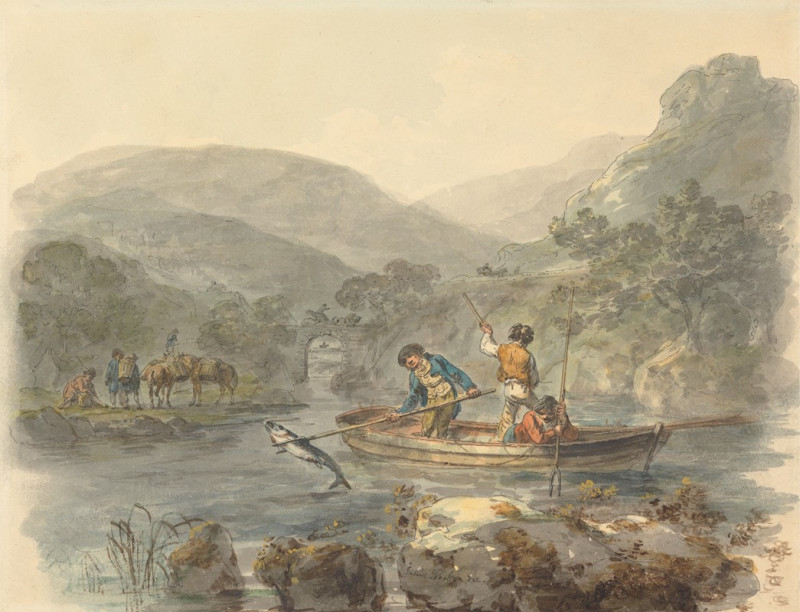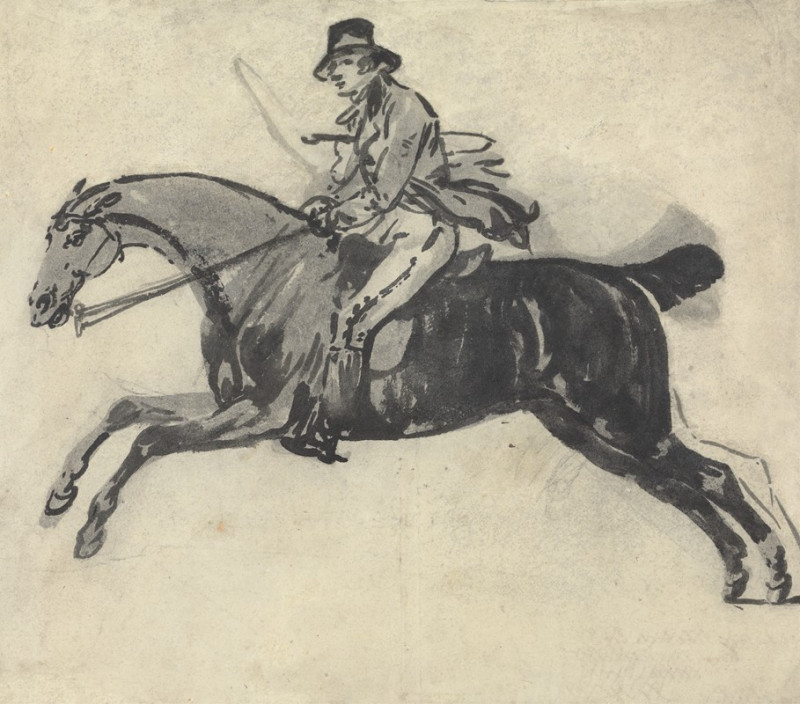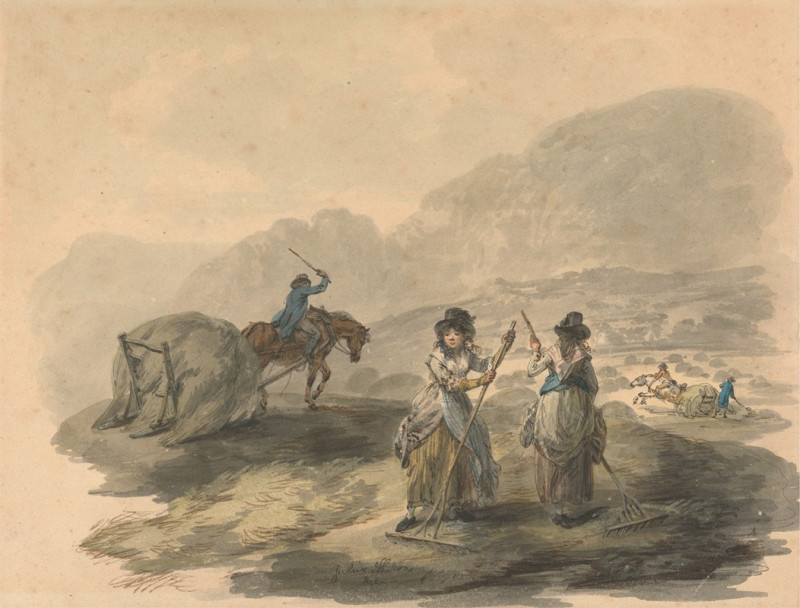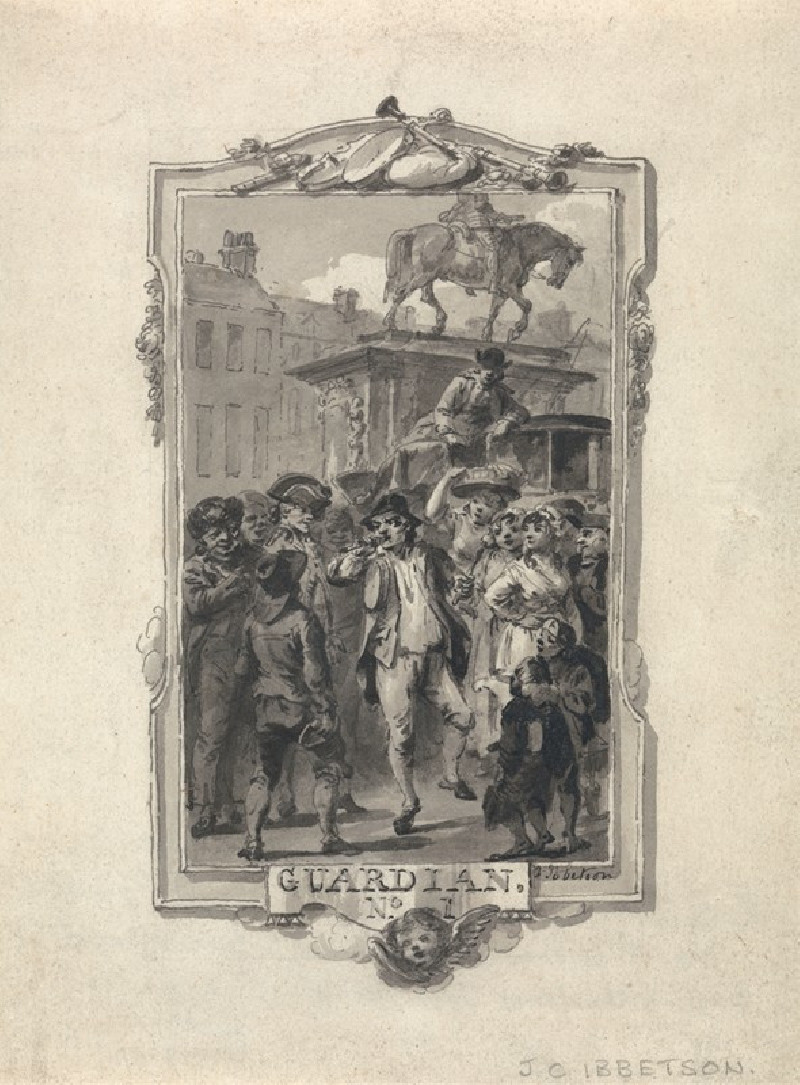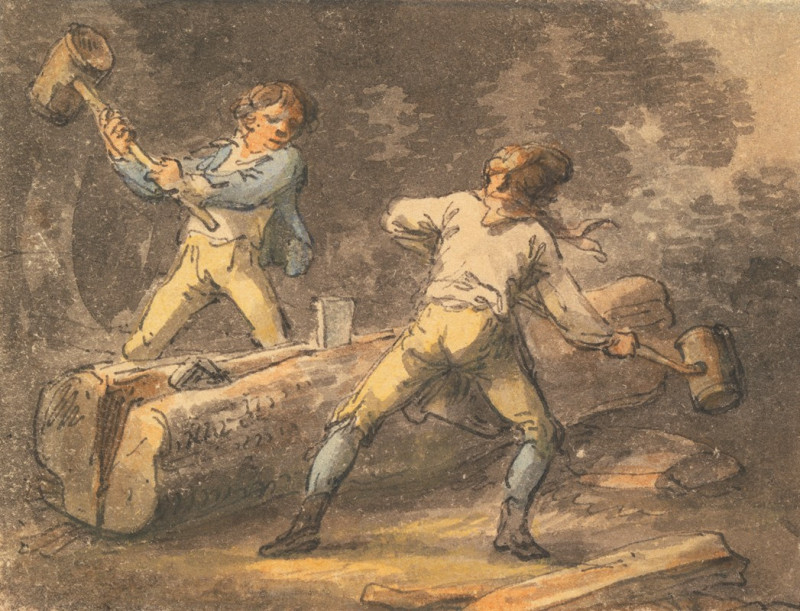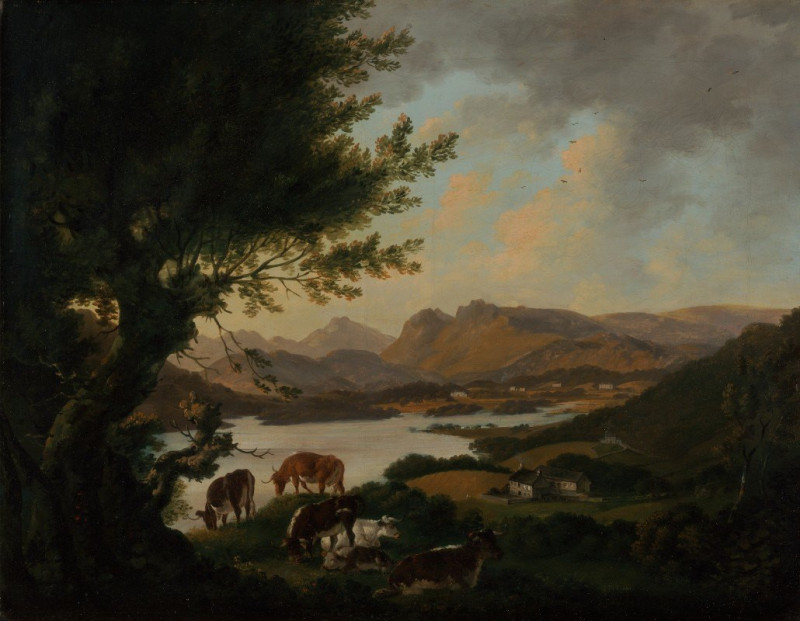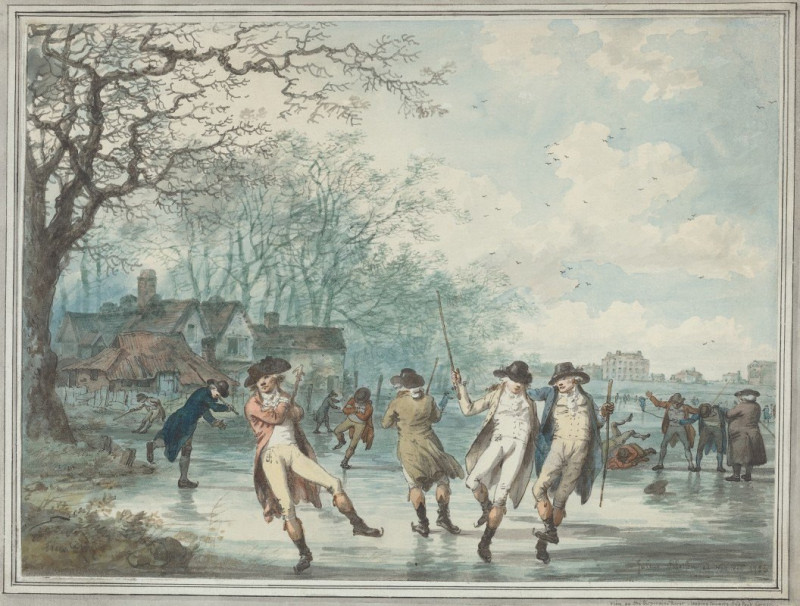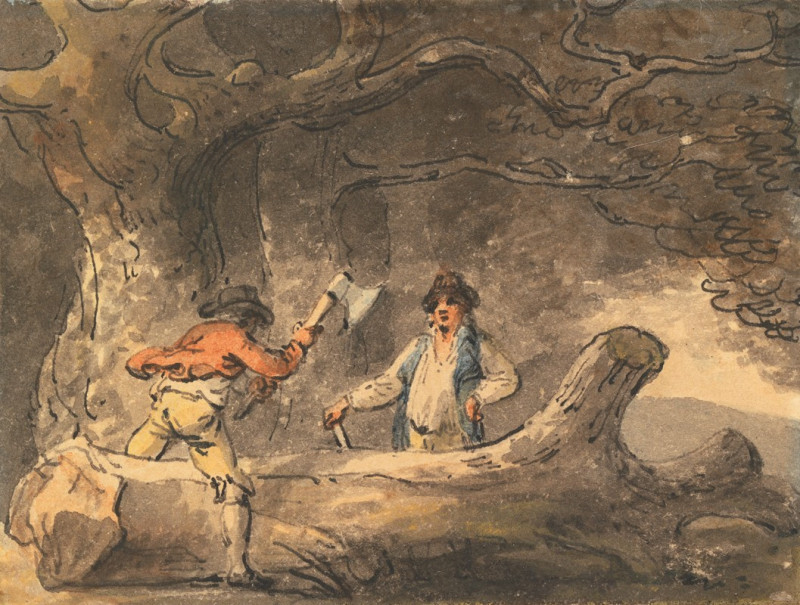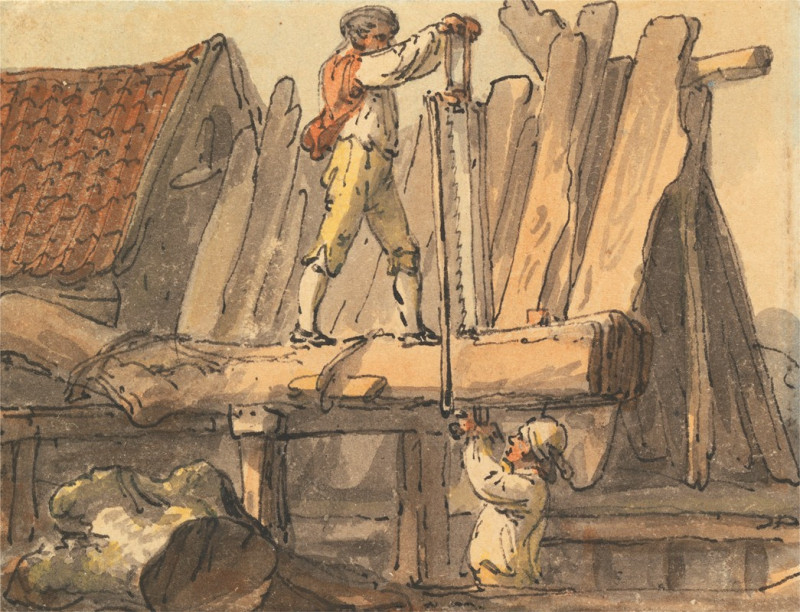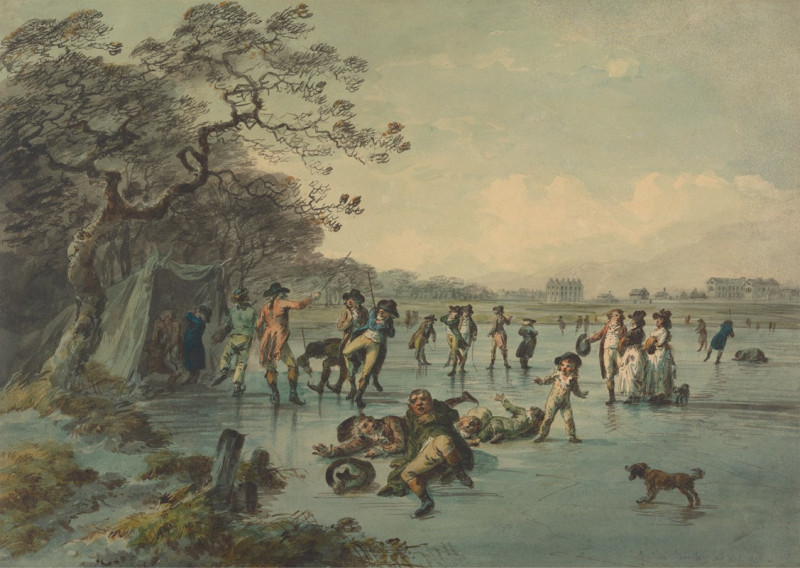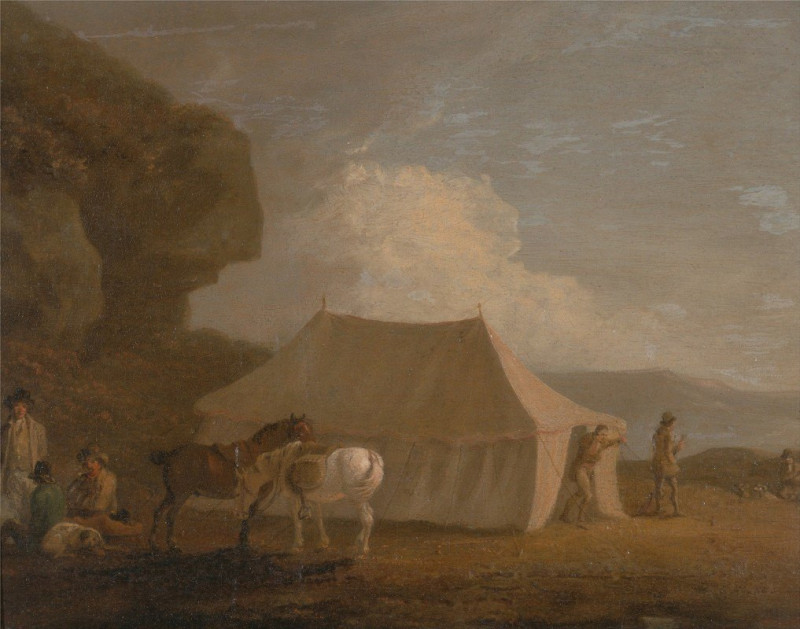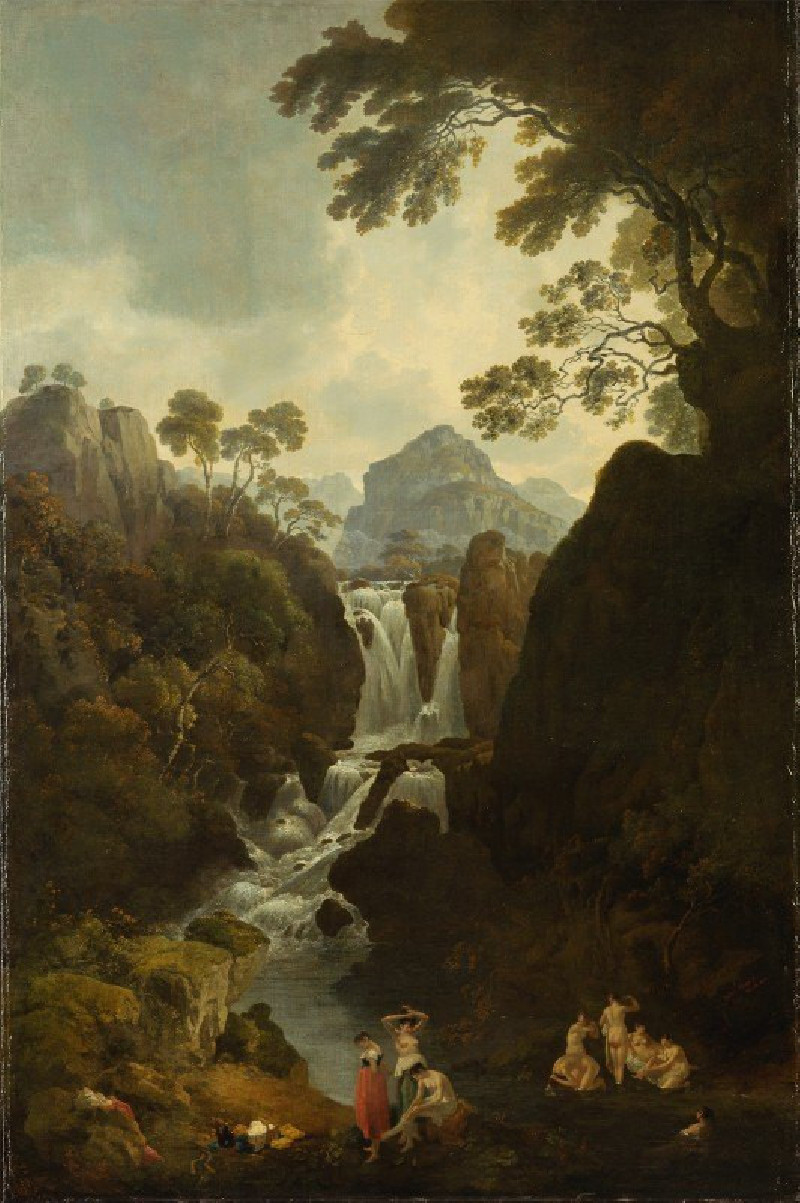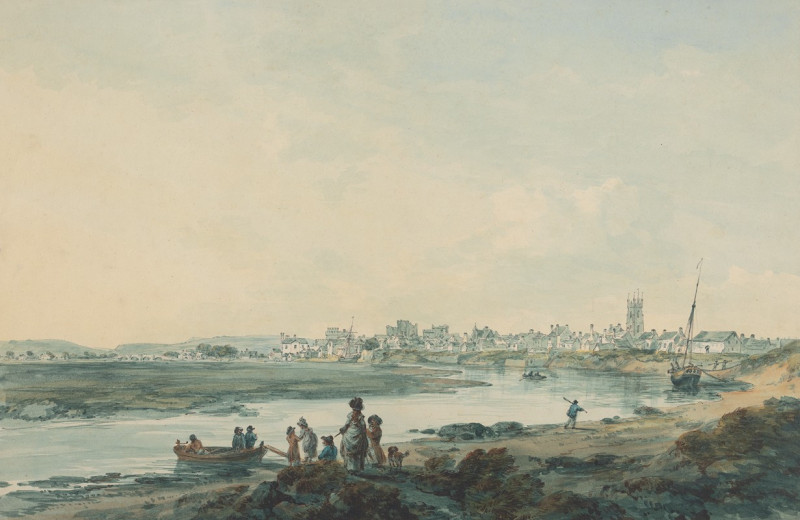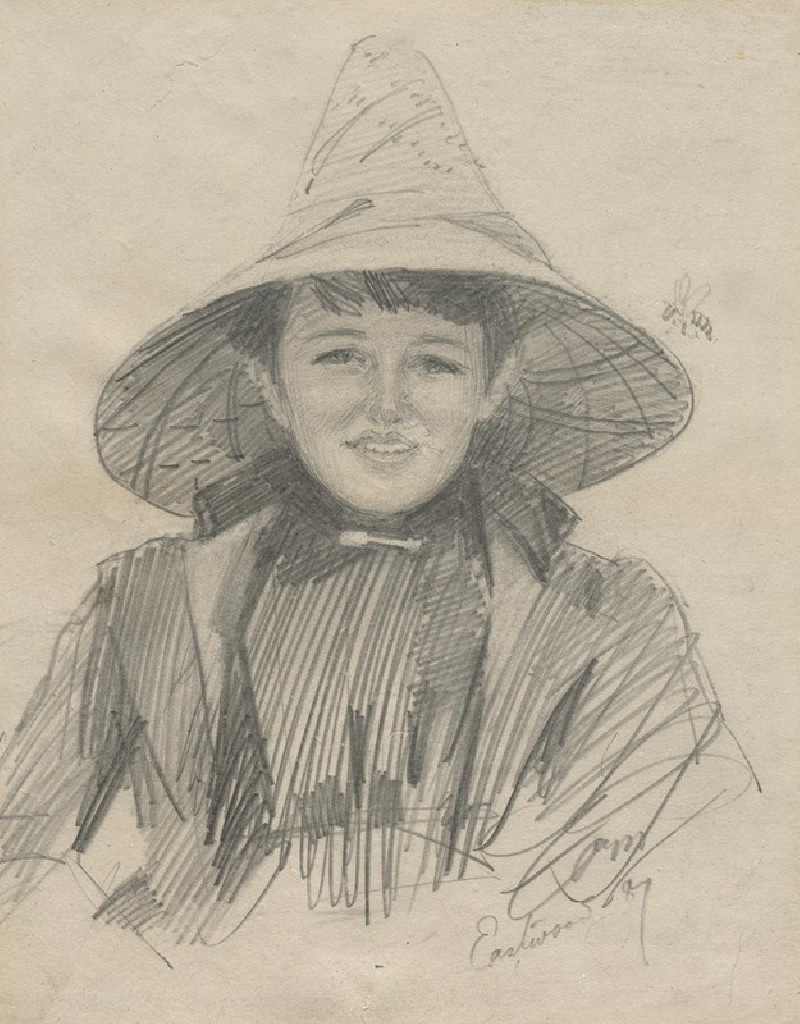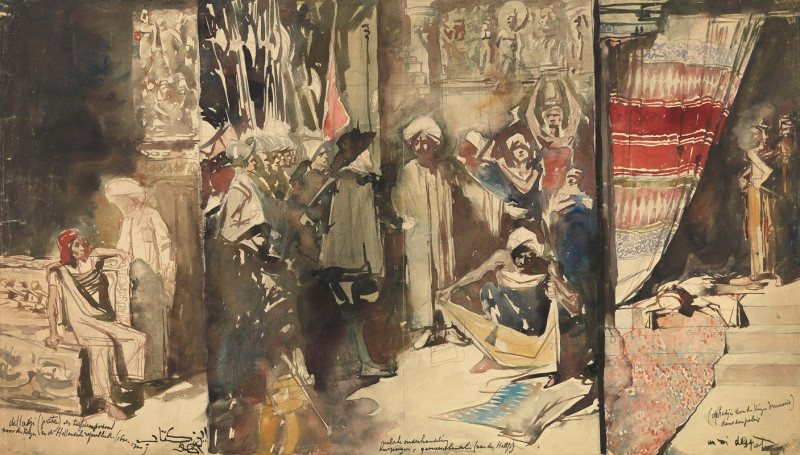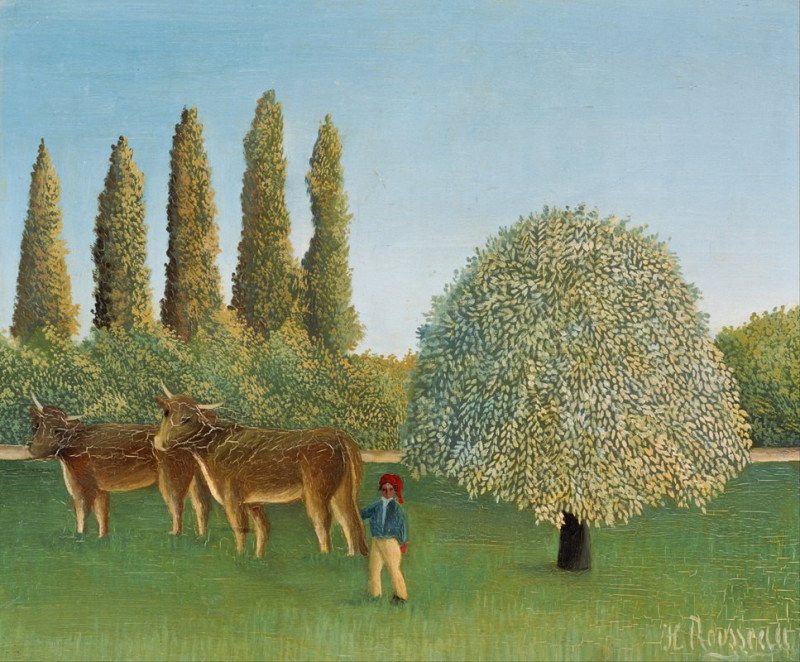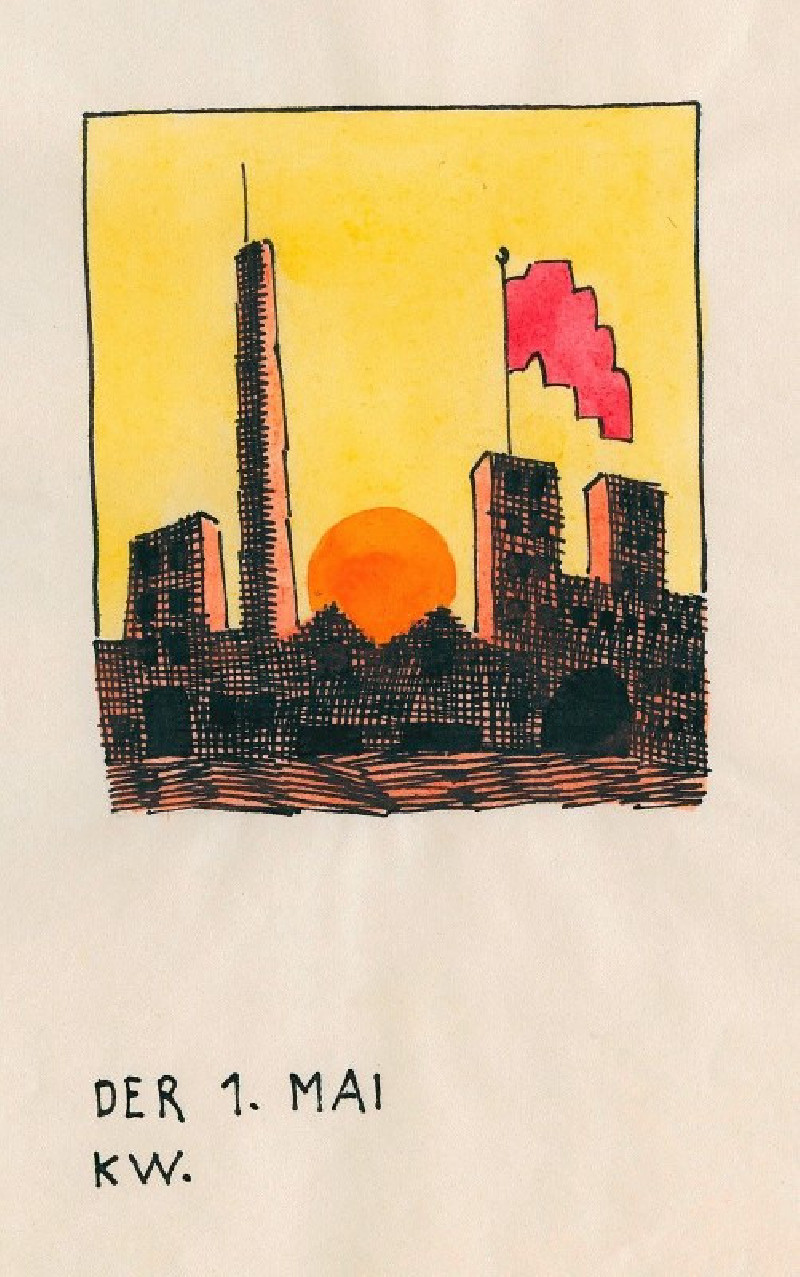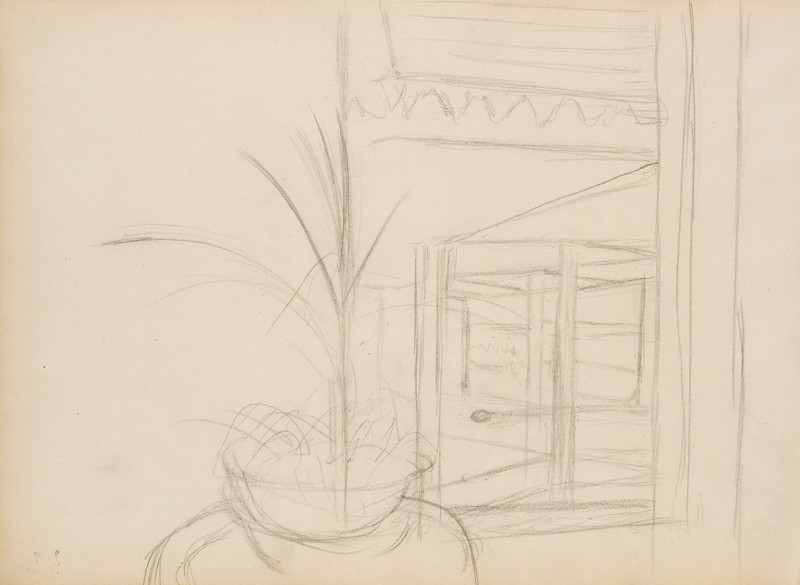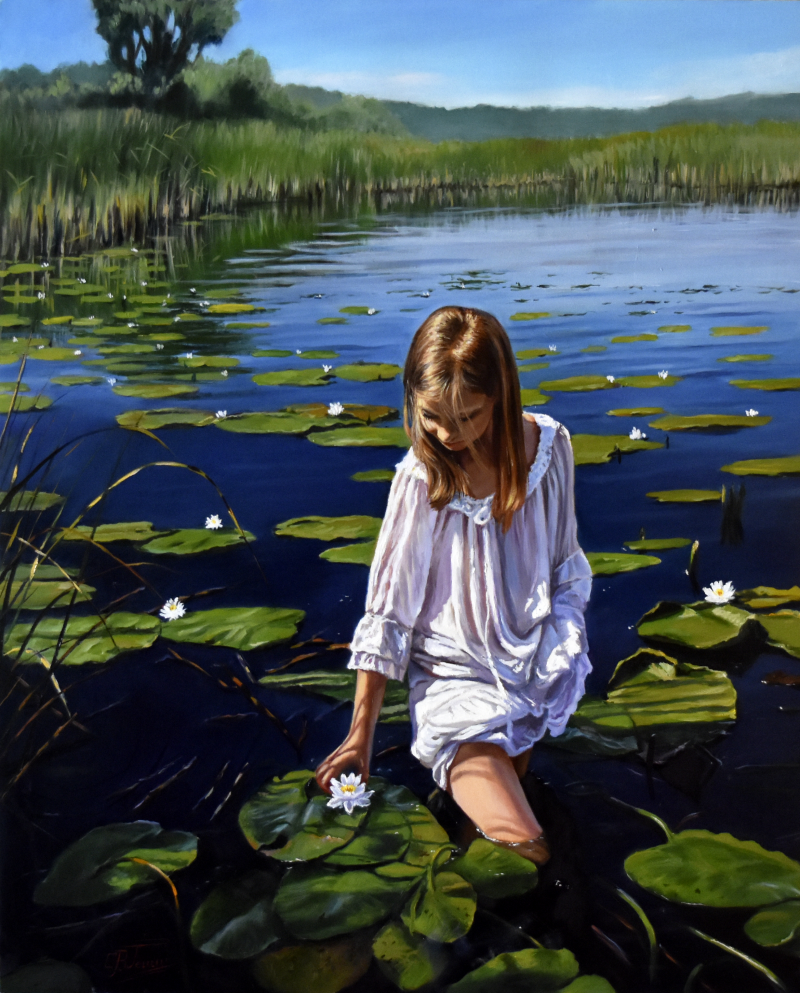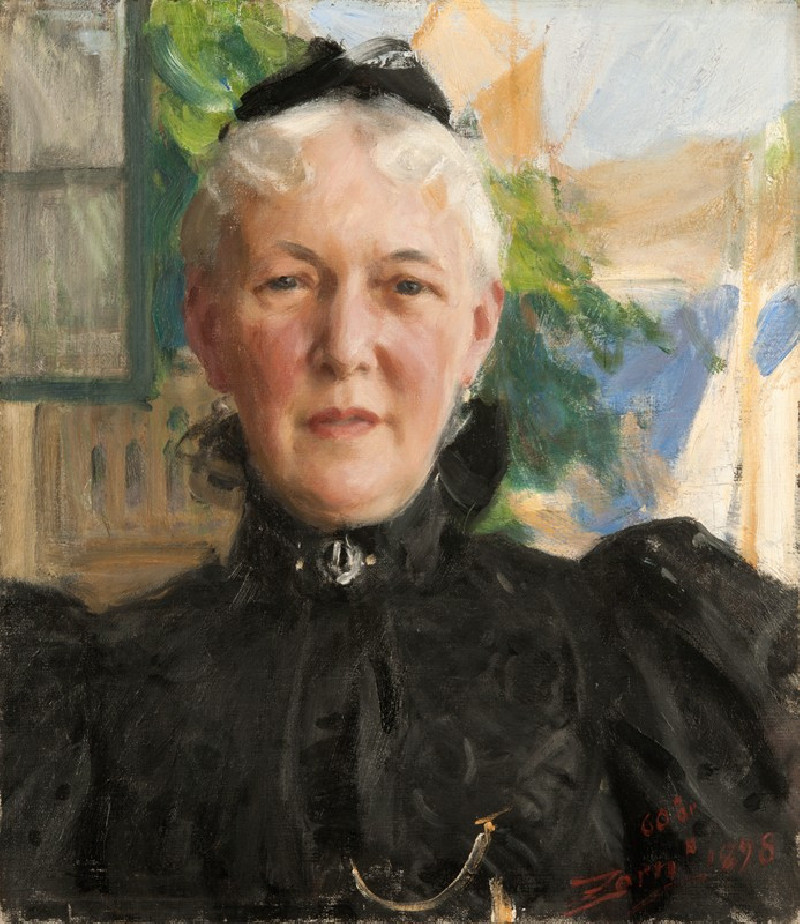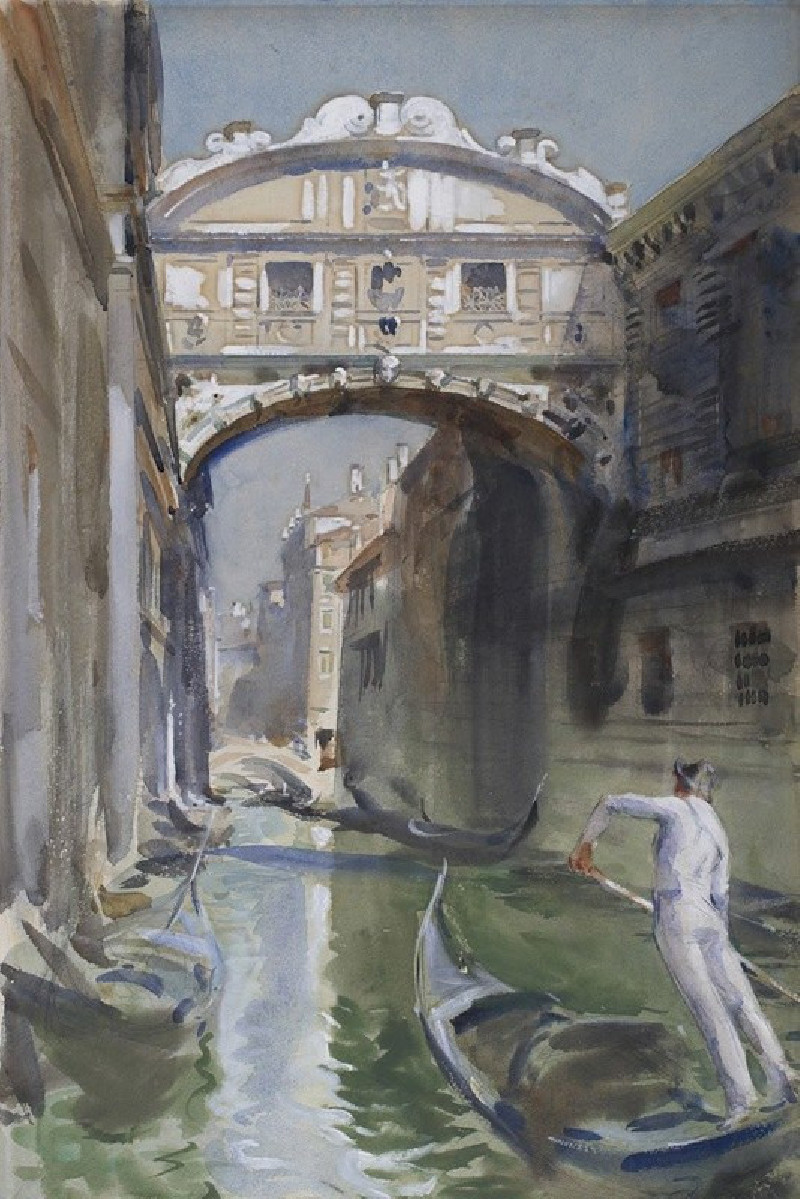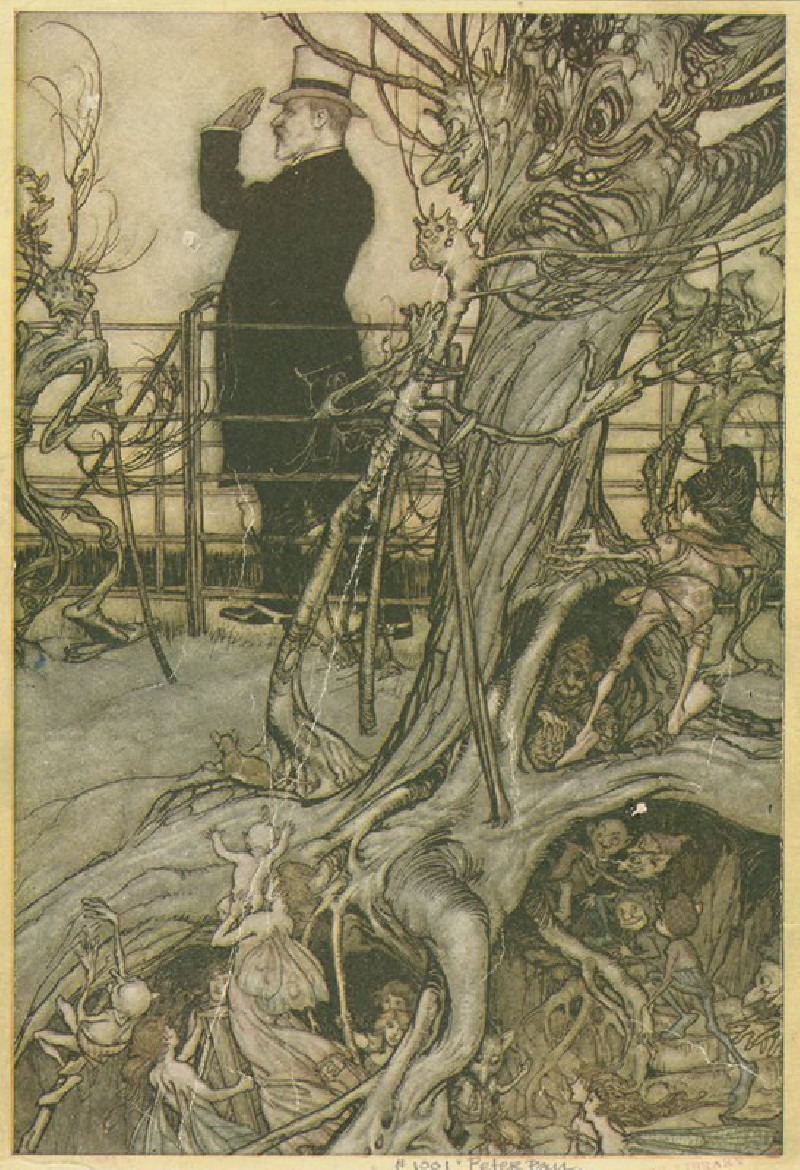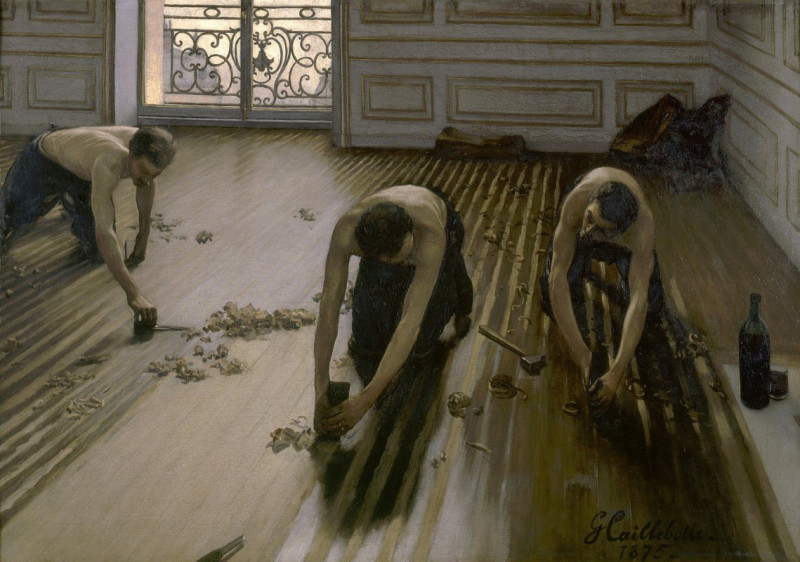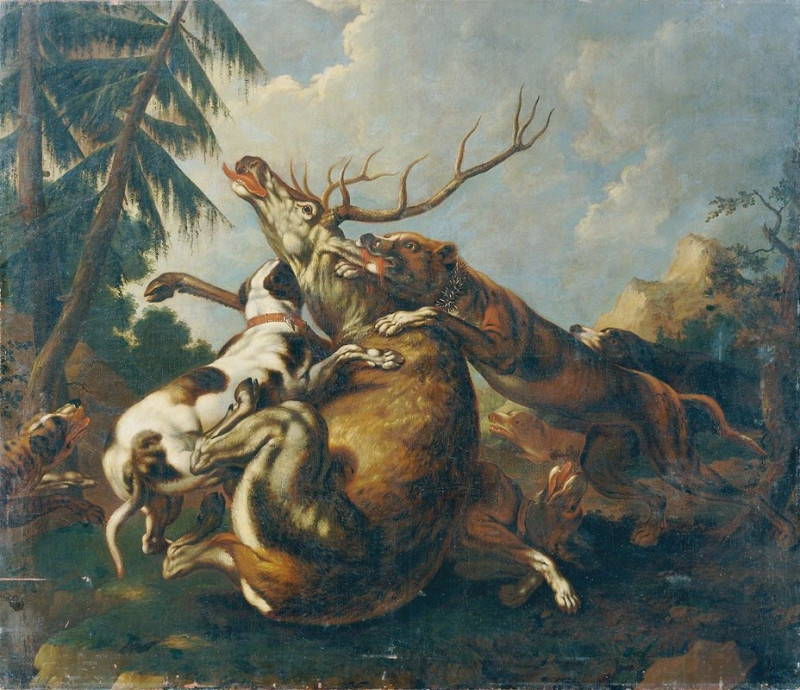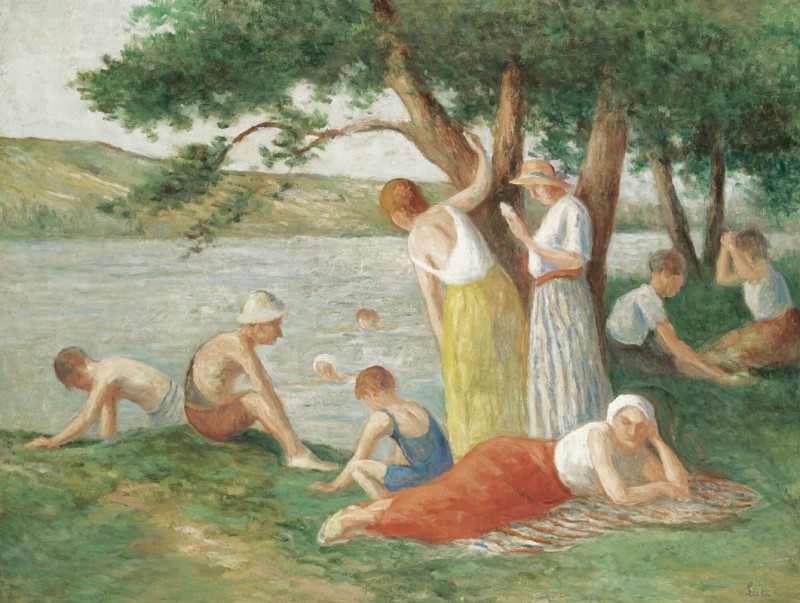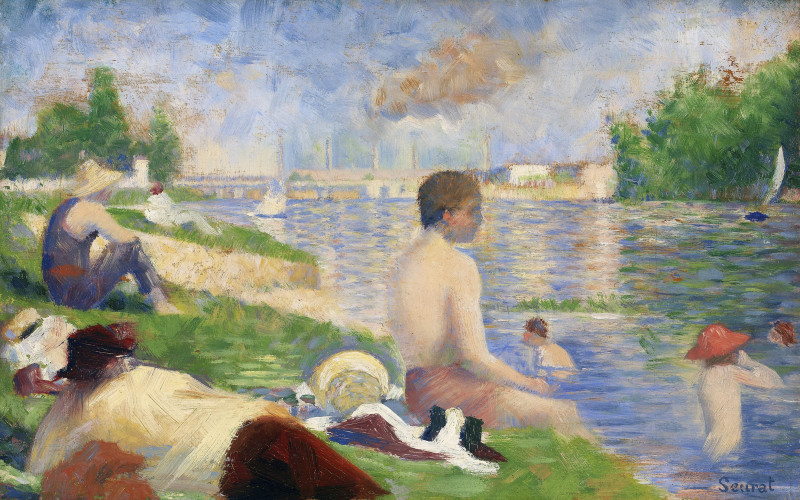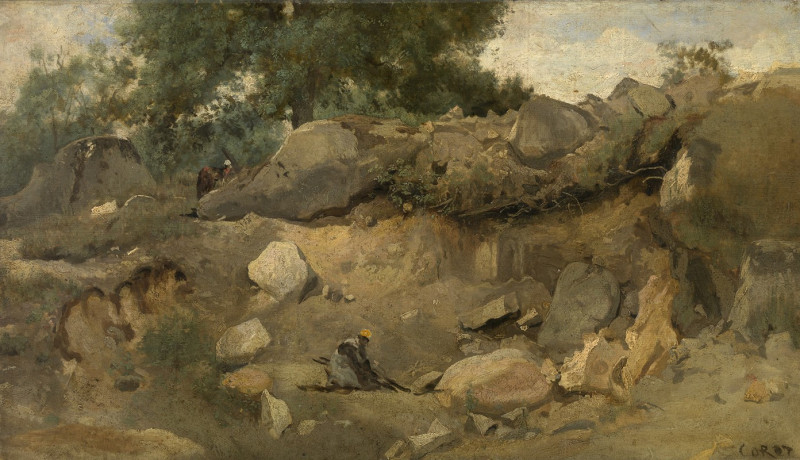Forming the Civic Crown
Technique: Giclée quality print
Recommended by our customers
More about this artwork
Julius Caesar Ibbetson’s “Forming the Civic Crown” is a striking visualization that transports viewers into the world of ancient Rome. This evocative painting encapsulates a significant cultural and historical moment, showcasing the ceremonial presentation of the Civic Crown, a prestigious military honor in Roman times awarded for acts of heroism.The scene is set in a bustling public space, possibly within a forum, as indicated by the architectural elements reminiscent of Roman architecture. At the center, a seated figure, presumably a valorous soldier, is depicted receiving the crown, symbolizing civic virtue and bravery. The crown itself, crafted from oak leaves, is tenderly placed upon his head by a figure that exudes grace and dignity, likely representing a personification of the Roman state or one of its virtues.To the left, a robust figure, possibly a military leader or a person of high status, gestures emphatically towards the crowned soldier, his pose and expression filled with pride and admiration. This individual’s commanding presence underscores the importance of the ceremony and its implications for Roman society, emphasizing honor and public recognition of valor.Adding to the narrative and emotional depth of the piece, there are several onlookers, each reacting differently to the event. Some appear in solemn contemplation, while others engage in animated discussions, illustrating the community’s involvement and interest in this civic ritual.Draped elegantly across the composition are female figures, imbuing the scene with a sense of allegory and embodying ideals such as Liberty and Justice. Their ethereal quality contrasts with the grounded, stoic nature of the other characters, creating a dynamic interplay between the earthly and the ideal.
Delivery
Returns
Julius Sergius von Klever was a Baltic German landscape painter.
His father was a chemist who taught pharmacology at the Veterinary Institute. He displayed artistic talent at an early age and took lessons from Konstantin von Kügelgen. After completing his primary education, was enrolled at the Imperial Academy of Fine Arts where, at his father's insistence, he studied architecture. After a short time, however, he began to take landscape painting classes; first with Sokrat Vorobiev, then Mikhail Clodt.

